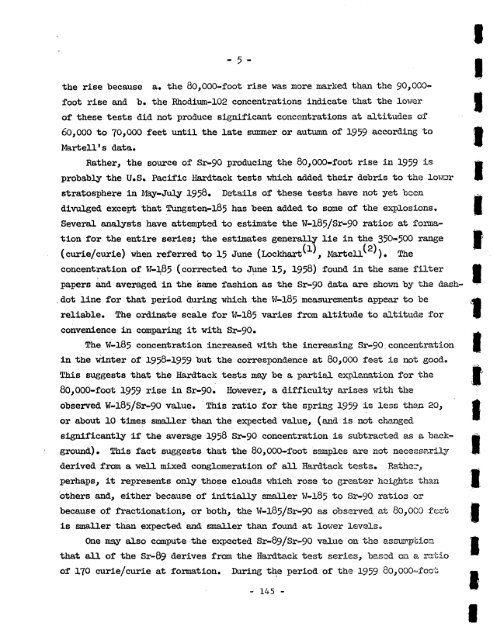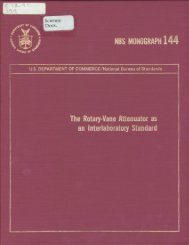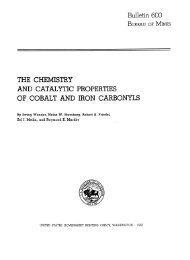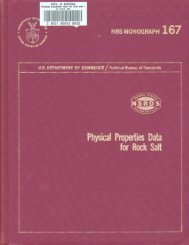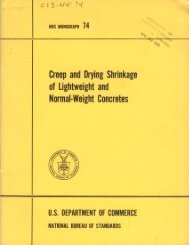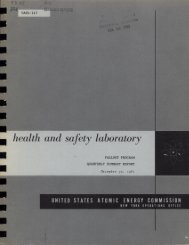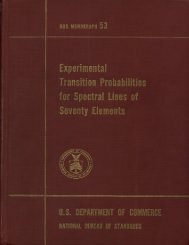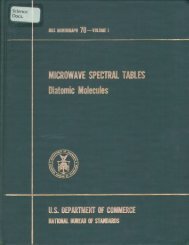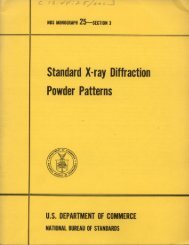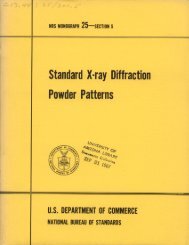FALLOUT PROGRAM QUARTERLY SUMMARY REPORT
FALLOUT PROGRAM QUARTERLY SUMMARY REPORT
FALLOUT PROGRAM QUARTERLY SUMMARY REPORT
- No tags were found...
Create successful ePaper yourself
Turn your PDF publications into a flip-book with our unique Google optimized e-Paper software.
- 5 -the rise because a* the 80,000-foot rise was more marked than the 90,000*-foot rise and b. the Rhodium-102 concentrations indicate that the lower •of these tests did not produce significant concentrations at altitudes of60,000 to 70,000 feet until the late summer or autumn of 1959 according to £Kartell's data. *iRather, the source of Sr-90 producing the 80,000-foot rise in 1959 :probably the U.S. Pacific Hardtack tests which added their debris to thestratosphere in May-July 195&. Details of these tests have not yet been _divulged except that Tungsten-185 has been added to some of the explosions* £Several analysts have attempted to estimate the W-l85/Sr-90 ratios at formation for the entire series; the estimates generally lie in the 350-500 range V(curie/curie) when referred to 15 June (Lockhart^ ', Kartell^ ')* Theconcentration of W-185 (corrected to June 15, 1958) found in the same filter •papers and averaged in the same fashion as the Sr-90 data are shown by the dash- .dot line for that period during which the W-185 measurements appear to bejftreliable* The ordinate scale for W-185 varies from altitude to altitude for mconvenience in comparing it with Sr-90. ^The W-185 concentration increased with the increasing Sr-90 concentration Iin the winter of 1958*1959 but the correspondence at 80,000 feet is not goodoThis suggests that the Hardtack tests may be a partial explanation for the •80,000-foot 1959 rise in Sr-90. However, a difficulty arises with theobserved W-l85/Sr-90 value* This ratio for the spring 1959 is less thaa 20, ftor about 10 times smaller than the expected value, (and is not changed *significantly if the aver&ge 1958 Sr-90 concentration is subtracted as a back- gground). This fact suggests that the 80,000-foot samples are not necessarily derived from a well mixed conglomeration of all Hardtack tests* Bathe?,perhaps, it represents only those clouds which rose to greater heights than J|others and, either because of initially smaller W-185 to Sr-90 ratios orbecause of fractionation, or both, the W-l85/Sr-90 as observed at 80,000 feet ffis smaller than expected and smaller than found at lower levels 0One may also compute the expected Sr-89/Sr-90 value on the assumption Wthat all of the Sr-09 derives from the Hardtack test series, basod on a ratio of 170 curie/curie at formation* During the period of the 1959 8o,000^foot _- 145 -Ii1


